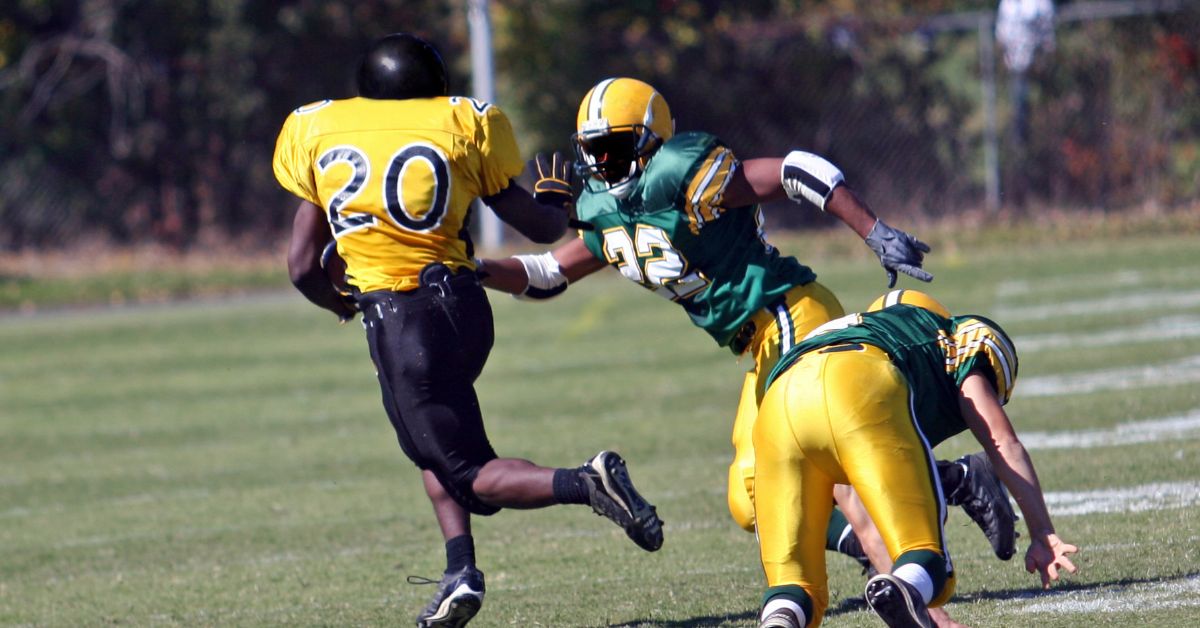“It’s ok to be wrong. About everything. Throughout my life, I’ve been wrong about myself, others, society, culture, the world, the universe, everything.” – Mark Manson, from “The Subtle Art of Not Giving a F*ck”
When you admit to “being wrong about everything,” you are no longer tied to the chains of tradition. You are free to discover new and more efficient ways to proceed. The average football coach has it all figured out at the age of thirty and spends the rest of their career defending their beliefs.
“The automatic things you do are basically those things that keep you from doing the better things you need to do.” – Bill Murray
Trust the process?
The brain really doesn’t like changing its mind. It’s a survival instinct. Unpredictability is perceived as a danger. The brain is a protective mother who prefers the known rather than the unknown.
When you admit to *being wrong about everything* you are no longer tied to the chains of tradition. You are free to discover new and more efficient ways to proceed, says @pntrack. Share on XWe are wired for “Confirmation Bias.” Confirmation bias causes us to filter out information that does not align with our beliefs. We seek confirmation, not contradiction. Being a contrarian in the days of the caveman was a dangerous way to live. Conformists passed on their DNA because they benefited from the support of their tribe.
“Anchoring Bias” causes us to hold on to the very first perceived truths we learn about something. Cro-Magnons with anchoring bias in their DNA survived better than those who failed to learn early lessons. Once again, tradition and conformity were a survival instinct.
Our thoughts and beliefs are tied to our identity. Our brains cling to our identity. We are taught to fight for our beliefs and always stand up for “who we are.” We are taught what to believe at a young age. Religion? Patriotism? Politics? Football?
If it’s not broken, why fix it?
Sometimes, though, we need to break things. Tradition is a mixed bag. Don’t throw the baby out with the bathwater, but get rid of that nasty bathwater.
My 25 years of coaching football were all spent on a high school staff. Every head coach demands that their staff is on the same page. Rebellious assistants have no friends and short careers. When I retired from coaching football in 2018, I had the freedom to get some things off my chest. I wrote New Ideas for Old School Football Coaches. I had no idea that the article would be the spark that created a movement called “Sprint-Based Football.”
What Is Sprint-Based Football?
The two-word answer to the question above: PRIORITIZE SPEED.
Note: The biggest online naysayers of sprint-based football try to dismiss it as wanting to just run a few fly 10s and then call it a day (therefore leaving players unprepared)…which is obviously a ludicrous strawman. “Prioritize” means to elevate among multiple other needs being addressed at the same time and does not mean to neglect other core technical, tactical, physical, and mental capabilities required to be successful on the field.
Prioritize speed at ALL positions. Speed is the tide that lifts all boats.
- Improved speed amplifies ATHLETICISM. Speed is the foundation of athleticism. The best athletes typically win football games.
- Improving speed amplifies AGILITY. Imagine two guys, the same in all respects with the exception of speed. Who changes directions better?
- Improved speed amplifies GAME SKILLS. When kids get faster, they feel more efficient and comfortable at “game speed.” The game slows down as you get faster, allowing you to execute skills that define a good football player.
- Improved speed amplifies ACCELERATION. Weight room people want to believe that squats and deadlifts are the key to acceleration, and they are not totally wrong. Strength is good. But, I’ve never seen a slow guy who could accelerate better than a fast guy. Period. When you improve your max velocity, you improve your first step, your first two steps, your first ten steps, etc. When you train the extreme, you train the range.
- Improved speed amplifies STRENGTH. Sprinting is the most underrated strength exercise in the human experience. Sprinters exert a peak force of up to 5x bodyweight into the ground, with as little as a 0.08 second ground contact time. Elite sprinters are so strong that their body experiences no noticeable collapse (less than two centimeters). In addition, a speed workout potentiates (makes next thing better) the weight room. There is no better warm-up than to light the fire of your CNS.
- Improved speed amplifies CAPACITY. I hate the word “endurance” (belongs to distance runners). Football players need to develop the capacity to do things at a performance level over and over again. Fast athletes can play at game speeds for a longer time than slow athletes. Let’s say that game speed is 15-17 mph. Who is better at repeating those speeds… someone whose max-velocity is 23 mph or someone who can only run 19 mph?
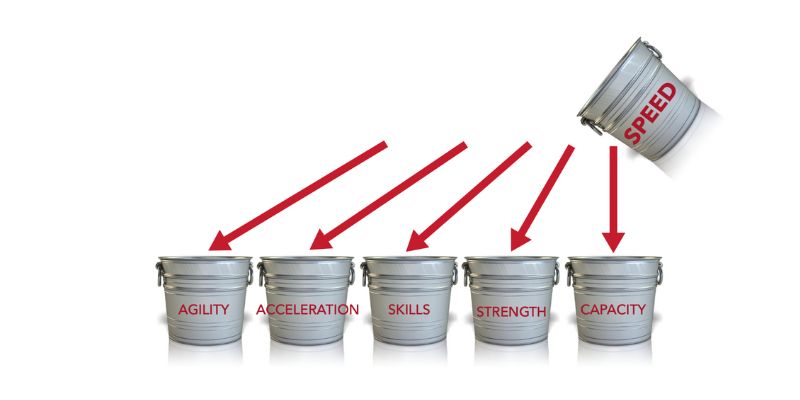
Defining the Feed The Cats Approach In 37 Words
Sprint, record-rank-publish, sprint before lifting, never let today ruin tomorrow, accept rest & recovery to create performance-level outputs, stop doing sh*t that makes you slow, and make practice the best part of a kid’s day!
Let’s unpack.
Sprint twice a week. Many Sprint-Based Football teams have replaced their antiquated, fatigue-seeking warmup with my Atomic Speed Workout.
Record, Rank, and Publish is foundational. I learned this decades ago through Bigger, Faster, Stronger. Too many coaches believe their words motivate athletes. Nope. Motivation comes from seeing progress. Additionally, coaches who time stuff, learn stuff. You never want your team speed to be diminished. Ever.
Never Let Today Ruin Tomorrow; aka, “Don’t Burn the Steak.” This is a tough sell to football coaches. Before our first day of double sessions, my high school coach told us “I am going to break you down and build you back stronger.” He wanted to break us like a cowboy would break a horse. The incredibly long practices, mostly filled with hard work for hard work’s sake, were designed to make us tough. That toughness would then be parlayed into a militaristic, never-say-die attitude which would then result in winning football games. Even if teams didn’t win, coaches bragged that they turned boys into men. Fifty years after I played, this traditional approach is still the modus operandi of most football programs.
Before our first day of double sessions, my high school coach told us *I am going to break you down and build you back stronger.* He wanted to break us like a cowboy would break a horse, says @pntrack. Share on XAccept Rest & Recovery to Create Performance Level Outputs. (Not just in games, but also in practice.) This is the exact opposite of the paragraph above. Being a basketball coach’s kid and having two uncles who were Hall of Fame football coaches, I wish I had a dime for every time I heard things like, “you play like you practice” or “quality over quantity.” They all “talked the talk,” but then fell back to the default: outworking your opponents.
Traditional coaches understood the need for a day off after a game, but where was that day off after a three-hour practice? If you burn the steak on Tuesday, your Wednesday practice is ruined. Effort will be the only thing a team can give their coach when they are too broken to perform.
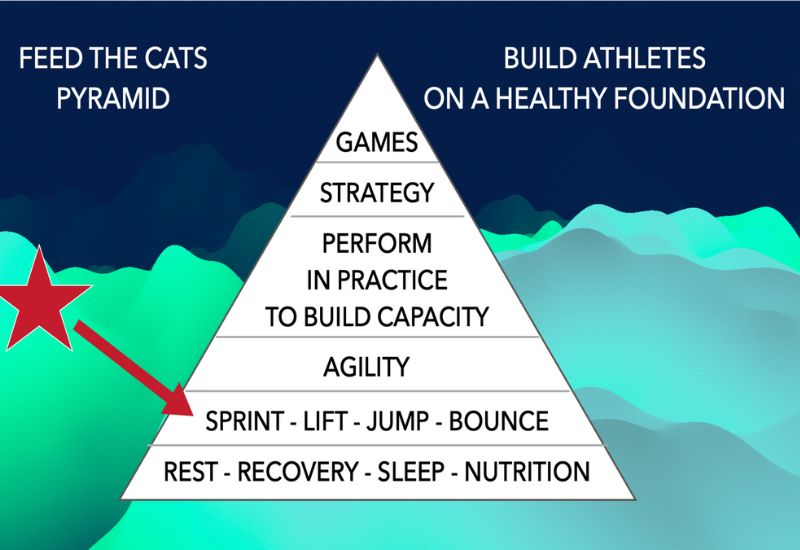
Stop Doing Sh*t That Makes You Slow. What makes you slow? Lifting without sprinting. Gaining weight and losing elasticity. High volumes of sub-max running. Traditional conditioning. I’ve even taken this to the extreme. Feed the Cats teams don’t do tempo running. This approach is used by Brian Kula in his training for Christian McCaffrey. Like me, Brian Kula believes that for speed athletes (football players, all positions), you can get an aerobic benefit from stacking quality anaerobic work.
This notion drives some in the S&C crowd nuts, because they learned in college that developing a large aerobic engine through conditioning is the key to recovering from anaerobic work. (Conditioning is half of their job title!) The zealots of the aerobic engine theory endorse large volumes of sub-max work all summer to build a base. The combination of too much slow and not enough fast lowers the ceiling of speed. (And it makes the summer suck.) Football coaches love it because it’s really hard and it’s totally miserable. (It’s also traditional.) Combined with the oppressive heat of summer, this recipe turns boys into men. Slow men.
The zealots of the aerobic engine theory endorse large volumes of sub-max work all summer to build a base. The combo of too much slow and not enough fast lowers the ceiling of speed (and it makes the summer suck), says @pntrack. Share on XMake Practice the Best Part of a Kids Day. This runs contrary to the old school approach. In the mid-1980s movie Hoosiers, Coach Norman Dale rants “My practices are not designed for your enjoyment!” Coaches all over the world high-fived. The physical and mental abuse within practice was a trial by fire to weed out the mentally weak and spiritually suspect. How can enjoyable practices prepare soldiers for war?
I would argue that kids are not soldiers and that football is a game.
The Argument Against Outworking Your Opponent
I will turn to the immortal words of Vince Lombardi: “Fatigue makes cowards of us all.”
Truer words have never been spoken. But what did coaches do? They glorified the pursuit of fatigue, believing it would bulletproof their team against fatigue in games. Instead, it led to unproductive practices and high injury rates.
“Get to the starting line 80% in shape and 100% healthy, not the other way around.” – Decathlon coach Harry Marra
Another Decathlon reference: Decathletes are poorly trained for their one endurance event, the 1500 meters. Why would any athletes intentionally undertrain for an event? Well, endurance training interferes with the pursuit of speed and power required to be world class at the other nine events (100 meters, long jump, shot put, high jump, 400, 110 hurdles, discus, pole vault, javelin). Milers are not world-class throwers, jumpers, or sprinters.
A direct line can be drawn from the Decathlon to football. Sure, football players must be able to play at a high level for 60-70 plays. But if fast, explosive movements win games, you better not spend your time repeating sub-maximal movements while celebrating effort.
Football coaches should want fast, explosive, healthy players who love practice. Endurance athletes are not great football players.
The Movement
Eight sprint-based football teams won state championships last year. Two of our Track Football Consortium speakers last December, Brad Dixon and Garrett Mueller, went a combined 28-0 and easily won their state championship games with nearly 100% healthy rosters and teams that were faster in week fourteen than they were in week one.
Today’s athletes have lots of options. Many choose not to play football. Boot camp summers don’t attract cats. Basketball players have better things to do. Lacrosse out-competes football in many states. There are big high schools in Illinois who can’t field a freshman football team.
It might be time for football coaches to lose their adoration of Bear Bryant’s “Junction Boys” and try something that gives them a true competitive advantage. Maybe it’s time to start attracting cats and developing athletes.
One of the underrated benefits of Sprint-Based Football (which could be described as “the disciplined pursuit of less”) is the impact it has on coaches, coaches’ wives, and coaches’ families.
The old-school, tyrannical taskmaster had to push kids. Coaches had to fight through their own fatigue to demand effort from their beaten and broken football team. Working with a mentally and physically healthy team that shows up fast, explosive, and enthusiastic will make the football coach’s job easier. The athletes will inspire the coach. The coach will reflect the enthusiasm, energy, and excitement of their team.
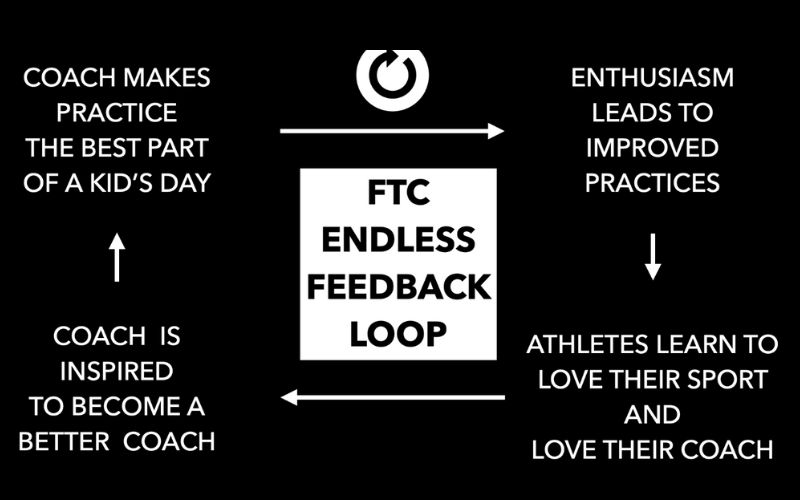
Reborn football coaches will not squander all their energy barking demands at their athletes for three hours. The reborn coach will go home to his wife and kids a happier and better person.
I have received multiple testimonials describing how the new approach saved marriages.
Working with a healthy team that shows up fast, explosive, and enthusiastic will make the football coach’s job easier. The athletes will inspire the coach. The coach will reflect the enthusiasm, energy, and excitement of their team. Share on XArgyle, TX, June 7-8
Join me and Brad Dixon at Liberty Christian H.S. in the Dallas area for nine hours of sprint-based football. Our special guests are David Neill (S&C, Liberty Christian), Kurt Hester (S&C Houston), and Tony Villani (agility, ShredMILL). Tickets can be purchased for individuals and entire coaching staffs.
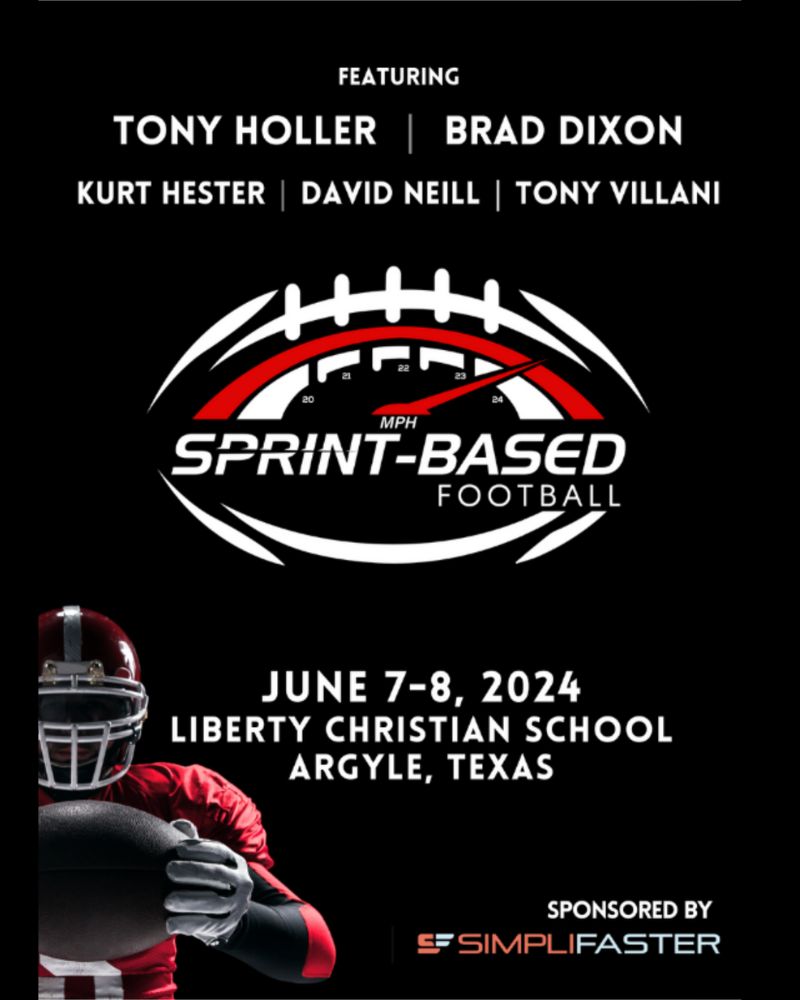
Since you’re here…
…we have a small favor to ask. More people are reading SimpliFaster than ever, and each week we bring you compelling content from coaches, sport scientists, and physiotherapists who are devoted to building better athletes. Please take a moment to share the articles on social media, engage the authors with questions and comments below, and link to articles when appropriate if you have a blog or participate on forums of related topics. — SF

